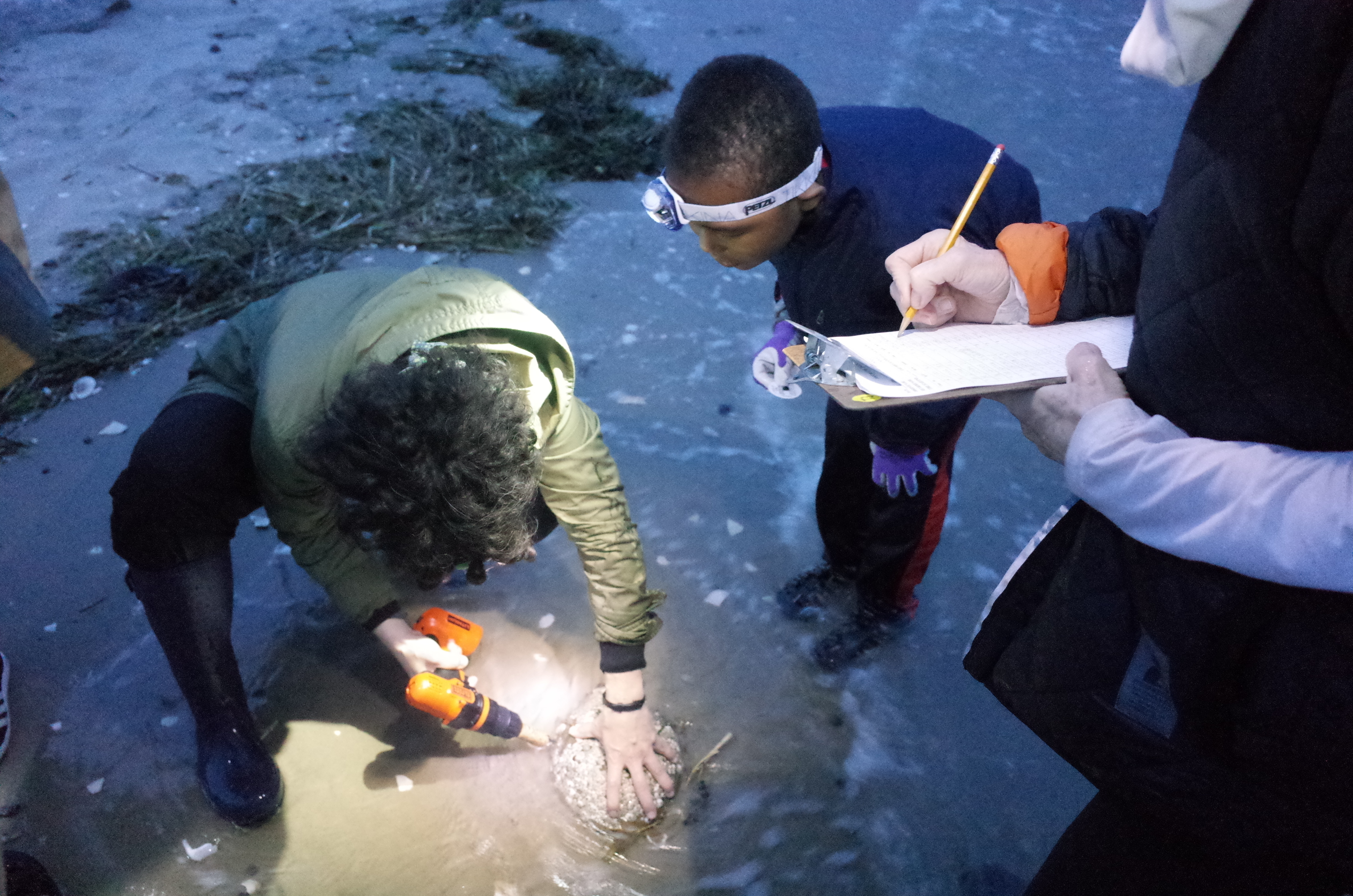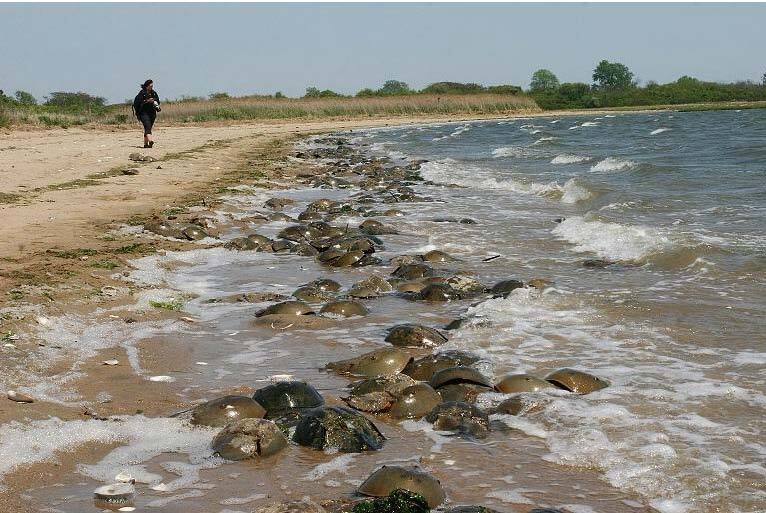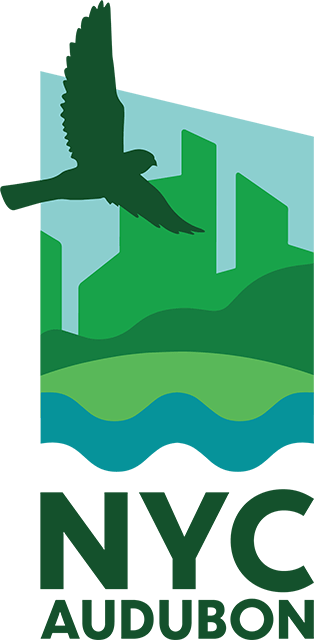Horseshoe Crab Monitoring
Red Knots, Dunlin, and Ruddy Turnstones are among the many shorebirds that feed on horseshoe crabs eggs. Photo: Don Riepe
WHY MONITOR HORSESHOE CRABS?
Atlantic Horseshoe Crabs are a fascinating and ancient species. One of the Earth’s oldest living species—unchanged for 400 million years, predating dinosaurs—their spring breeding behavior is one of nature’s great spectacles. During the breeding season, Horseshoe Crabs migrate to shallow coastal waters. They arrive by the hundreds of thousands on the beaches of the Atlantic Coast during the new and full moons in May and June. A female horseshoe crab can lay up to 120,000 eggs, in batches of a few thousand at a time.
These eggs are a critical food supply for migrating shorebirds like the Red Knot. Although horseshoe crab eggs may seem abundant, declines in horseshoe crab populations due to over-harvesting are believed to be connected to declines in the migrating shorebird populations.
Since 2009, NYC Audubon’s corps of community scientists has monitored several beaches on which horseshoe crabs spawn in Jamaica Bay, gathering data on horseshoe crab numbers. Our monitoring is part of a statewide project led by Cornell Cooperative Extension of Suffolk County in partnership with the New York State Department of Environmental Conservation, to survey horseshoe crabs spawning populations, in order to inform conservation and management plans.

Volunteers measure and tag a horseshoe crab at Plumb Beach, Brooklyn. Photo: Akiko Togami
VOLUNTEER AS A HORSESHOE CRAB MONITOR
Signups for 2024 are now closed. If you have registered as a horseshoe crab monitor, click below for details on what to bring, monitoring sites, and dates.
To receive email notifications about horseshoe crab monitoring volunteer opportunities in 2025, or any of our other volunteer opportunities, subscribe to our eGret newsletter.
To receive email notifications about horseshoe crab monitoring volunteer opportunities in 2025, or any of our other volunteer opportunities, subscribe to our eGret newsletter.

Spawning horseshoe crabs in Jamaica Bay. Photo: Don Riepe
LEARN MORE ABOUT THE ATLANTIC HORSESHOE CRAB
Learn more about the Atlantic Horseshoe Crab and the migratory shorebirds that depend on it.
Information about the entire Long Island monitoring program can be found through the New York Horseshoe Crab Monitoring Network.


